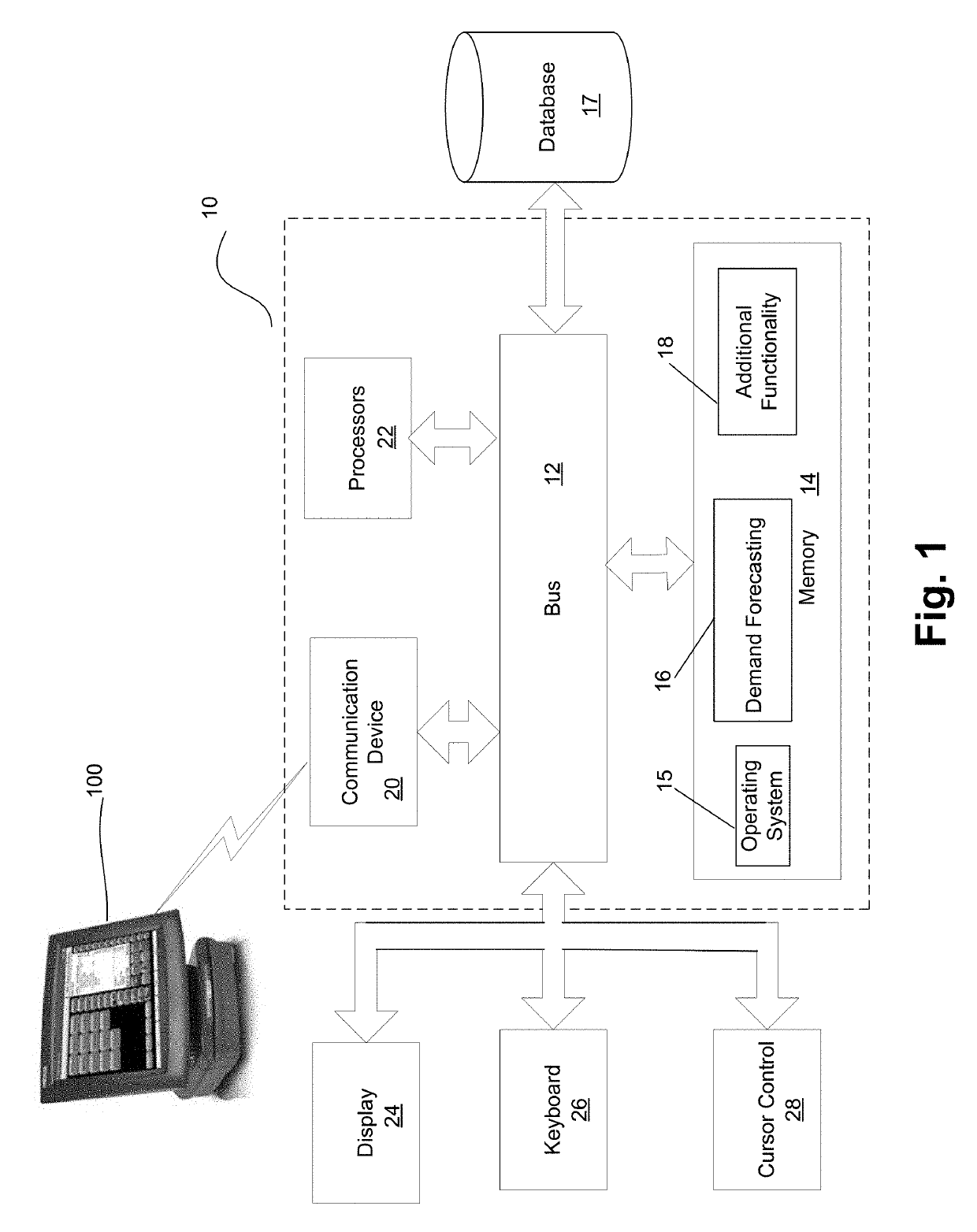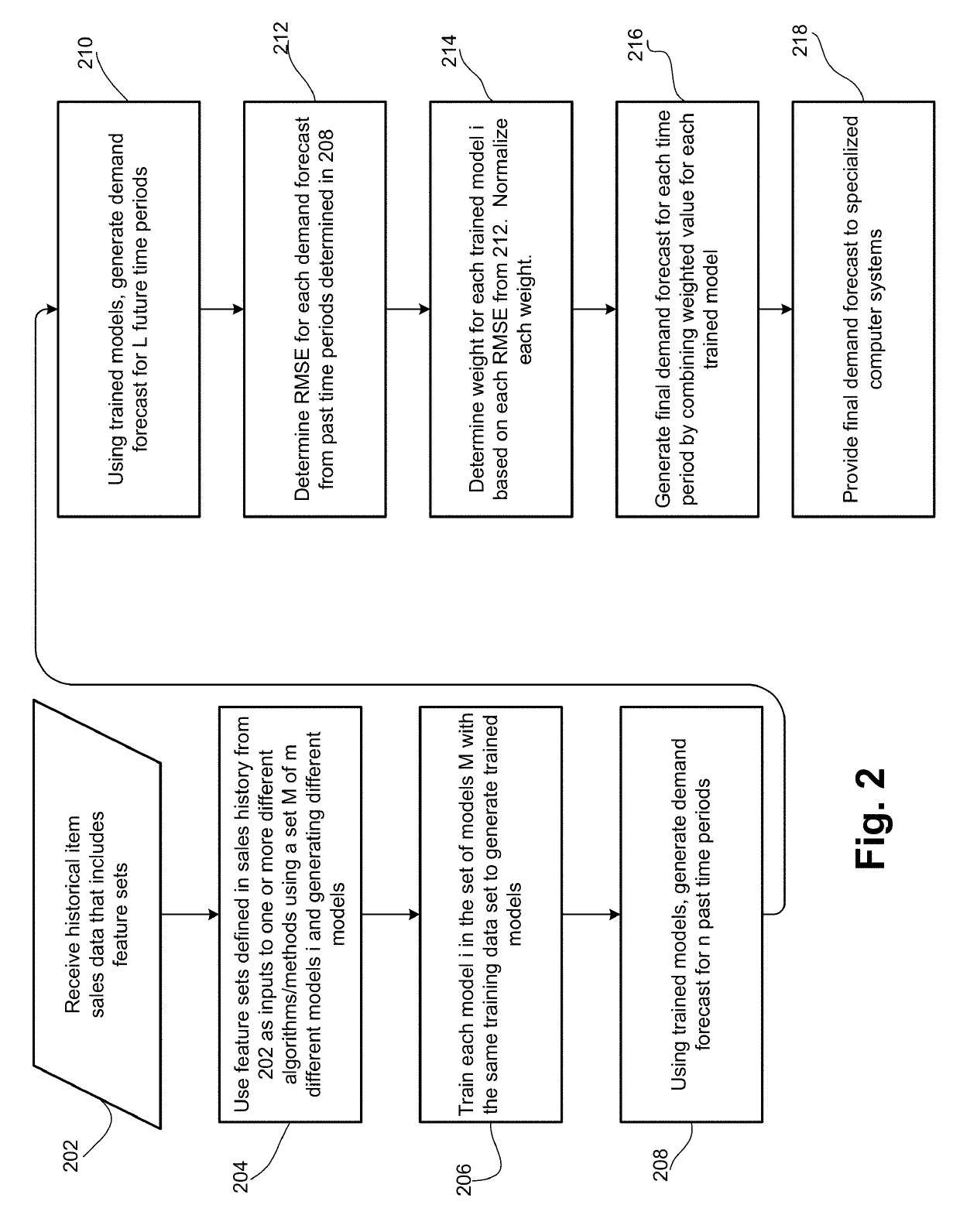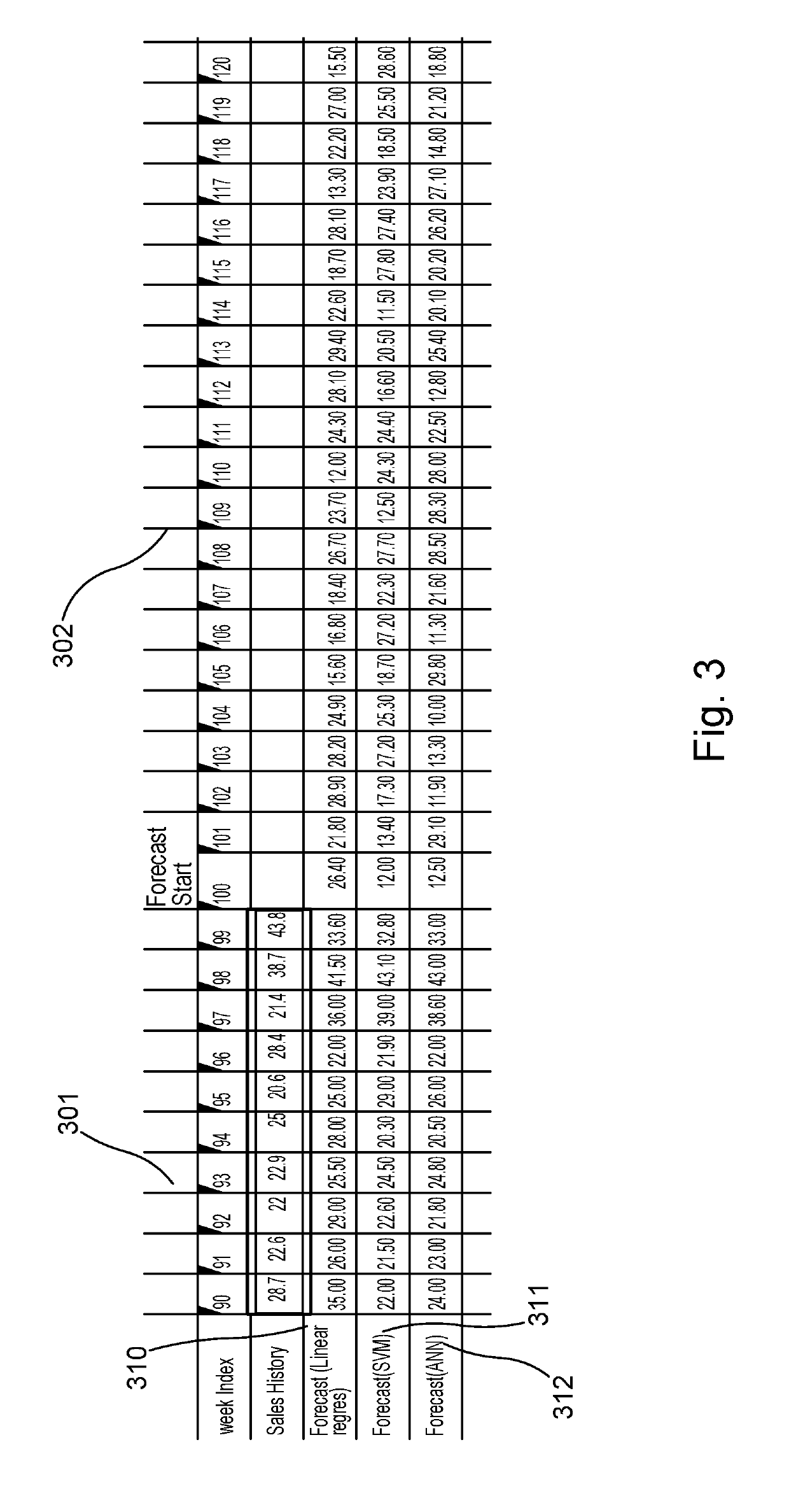Demand forecasting using weighted mixed machine learning models
a machine learning and demand technology, applied in machine learning, instruments, data processing applications, etc., can solve the problems of inaccurate forecasting, increased costs associated with holding inventories, and loss of revenues
- Summary
- Abstract
- Description
- Claims
- Application Information
AI Technical Summary
Benefits of technology
Problems solved by technology
Method used
Image
Examples
Embodiment Construction
[0011]One embodiment forecasts a demand of a product by training multiple algorithms / methods and multiple features using historical sales data input resulting in multiple trained models, and then weighting each of the trained models based on an error value. Using the weights and the multiple models, the demand forecast is generated by combining a weighted forecast generated by each of the trained models.
[0012]Sales and demand forecasting methods can roughly be grouped into judgmental, extrapolation, and causal methods. Extrapolation methods use only the time series data of the activity itself to generate the forecast. Known particular algorithms / methods range from the simpler moving averages and exponential smoothing methods to the more complicated Box-Jenkins approach. While these known methods identify and extrapolate time series patterns of trend, seasonality and autocorrelation successfully, they do not take external factors such as price changes and promotion into account.
[0013...
PUM
 Login to View More
Login to View More Abstract
Description
Claims
Application Information
 Login to View More
Login to View More - R&D
- Intellectual Property
- Life Sciences
- Materials
- Tech Scout
- Unparalleled Data Quality
- Higher Quality Content
- 60% Fewer Hallucinations
Browse by: Latest US Patents, China's latest patents, Technical Efficacy Thesaurus, Application Domain, Technology Topic, Popular Technical Reports.
© 2025 PatSnap. All rights reserved.Legal|Privacy policy|Modern Slavery Act Transparency Statement|Sitemap|About US| Contact US: help@patsnap.com



